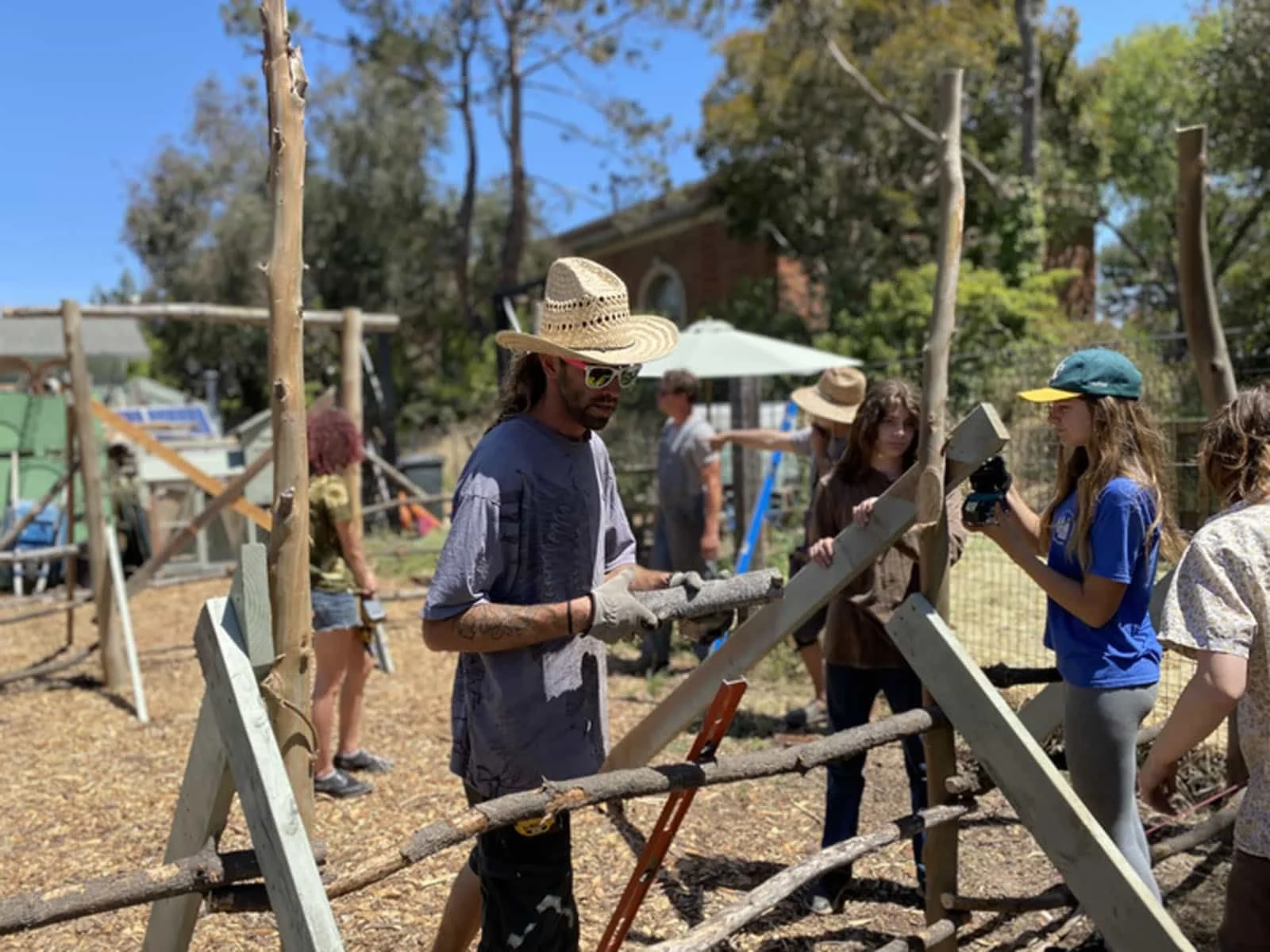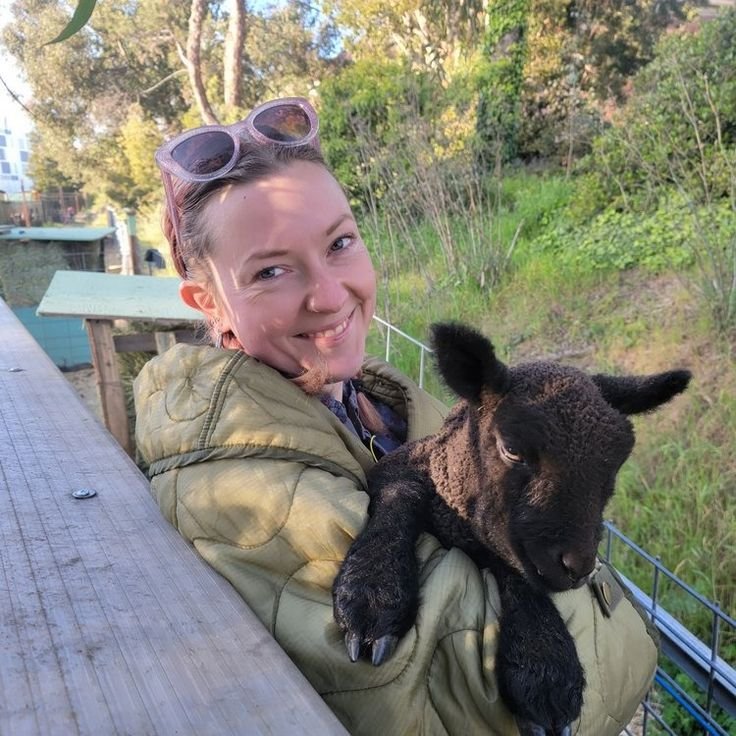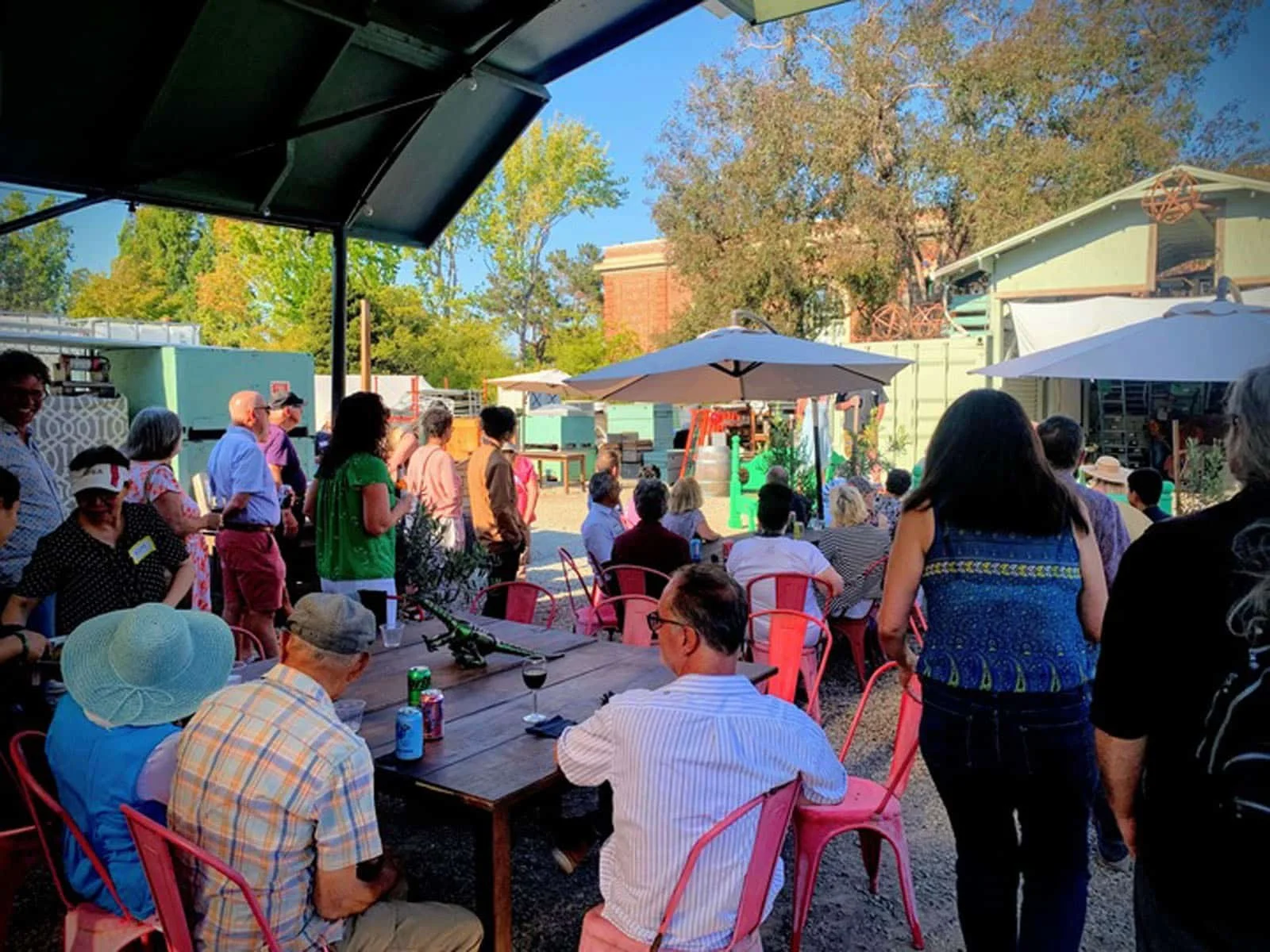ALAMEDA POST EDITORIAL: REAP CLIMATE CENTER IS MAKING A DIFFERENCE
By Jonathan DeLong
This editorial was first published in the Alameda Post on May 2nd, 2024. Available here. It is reproduced here with permission from the Alameda Post.
At REAP Climate Center, we believe that by training people to support natural systems, we can play a critical role in turning the tide of human-driven climate change and improving outcomes for communities, ecosystems, and economies. Our mission is to increase access to climate change mitigation by providing ecological experiences and climate job pathways. This work is already underway at our half-mile long campus, located on a narrow stretch of land just east of the Posey Tube.
With our Alameda Campus as our starting point, we are aiming for global impact. We envision a world where all human-built systems align with nature. We believe that deploying Nature as Infrastructure to enhance biodiversity and support green jobs is a key path forward for ecosystems, for equity, and for economic development.
Since our inception in late 2020, REAP Climate Center has worked tirelessly to mitigate the effects of climate change and empower people to be part of the solution. We are amazed that, thus far, nearly 4,500 people have visited our interactive campus and training center—half of our visitors have been kids, half have been adults.
We have provided job training to vulnerable communities, built hundreds of tons of compost, transformed our Alameda campus into a home for biodiversity, and represented on major global stages such as TEDxBoston. We have welcomed thousands of volunteers, held workshops and events for the community, and helped to support key local initiatives, including:
Our 2023 Annual Report details many of our specific accomplishments.
All of these achievements work toward our central goal: supporting the development of a climate workforce for regenerative systems change. We enable climate action by engaging people along the arc from play and discovery through to certifications and job placement. From open volunteer hours on Sundays and Wednesdays to workshops and courses, we believe in making climate action accessible to any and all.
Our focus on aligning human-built systems with nature is informed by the recognition of Nature as Infrastructure. To embrace this concept is to recognize that natural systems offer time-tested blueprints for solving problems. Natural systems are out of balance, so it only makes sense that nature-based solutions, which act on the systemic scale of the problem, should play a central role in righting our course.
We arrived at this moment of crisis because our human-built systems disrupt natural processes. We have the opportunity to reverse that trend. By realigning human systems with nature, we can accelerate positive outcomes for all. This is why rather than focusing on novel technologies—though we pay close attention to them—REAP emphasizes opportunities for people and communities to support natural systems.
The power of this nature-based, biodiversity-driven approach to the climate crisis is not only that the solution meets the scale of the problem. Unlike ongoing electrification efforts, from electric buses to solar grids, it provides an immense opportunity to call people into this crucial work as partners, practice keepers, volunteers, and ultimately workers.
To be clear, the work of electrification is without doubt a crucial response to the climate crisis. But centering on metrics like carbon parts per million (PPM) and global temperature targets keeps many people on the sidelines. By looking at Nature as Infrastructure, we have the opportunity to call in large groups of people, especially from the communities most impacted by climate disruption, such as underserved communities and those residing in low-lying places.
This is why our approach centers on workforce and economic development, allowing us to lower barriers to entry into nature-positive work. As amazed and excited as we are by enthusiasm for climate work, we don’t think that we are going to meet the challenge of climate change by waiting for enough people to become interested in giving their time to climate action.
Instead, we want to work from within to redirect the larger, human-built systems that control our collective impacts on the earth. Workforce development is a powerful tool in this respect, supporting individuals in creating financially viable careers that support the health of ecosystems. We can meet the immediate economic and social needs of communities while serving the needs of the planet. That is the core of REAP’s model, and it’s a pathway for millions of people to come on board.
Our vision is ambitious and sprawling, and it’s impossible to summarize in just one editorial. We tried that, but it ended up being a 30-page document that we at REAP like to joke is a manifesto disguised as a white paper.
Before we can reach for that global vision, we’re doing crucial work here in Alameda. We love Alameda for many reasons, but the primary reason it’s a strategic starting point for our ambitious vision for global systems change is its unique role among climate-impacted islands.
Island nations and municipalities are and will continue to be the hardest hit by the climate crisis, and Alameda is the largest island municipality in California. California, in turn, is the fifth-largest economy in the world, with the Bay Area considered one of the leading innovation hubs globally.
Alameda is unique among islands in that our community here has both participated in and benefited from the systems that led us to this moment of crisis. At the same time, we will be in company with parts of the world that will suffer the most from climate change. So we should do everything we can to lead by example and solve our problems here, in order to support others elsewhere. Even though REAP’s vision is for global change, we believe it should start right here, in Alameda.
REAP offers many pathways to involvement and support. We are always looking for day volunteers, pro bono professional support, and community engagement. We are growing our board, our leadership council, our mentor collective, and our donor pool. Learn more about those opportunities on our Volunteering web page.
To learn more about our Vision and why we believe it is important, check out our Executive Summary, Annual Report, and Vision Document. Visit us online at REAP Climate Center, stop by in person for our open volunteer hours every Sunday and Wednesday, and follow us on Instagram.




